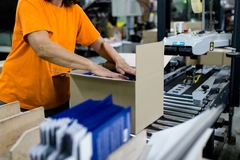Biodegradable coatings do not contaminate paper recycling streams, finds study

Croatian researchers have found that biodegradable polycaprolactone (PCL) and PCL nanocomposite coatings do not negatively affect recycled fibers’ appearance and shed light on the recycling potential of paperboard packaging.
As the demand for eco-friendly materials rises, particularly in F&B and consumer goods industries, innovations in biopolymer coatings and their application in packaging materials are receiving growing attention.
The research, published in Recycling, investigates the impact of biodegradable PCL coatings and PCL modified with nanoparticles of silicon dioxide (SiO₂), aluminum oxide (Al₂O₃), and zinc oxide (ZnO).
“Recycling of waste paperboard into paper is essential for reducing packaging waste and preserving natural resources. However, the process often leads to changes in the optical properties of the recycled material,” say the researchers.
“This study demonstrates that the application of PCL and PCL nanocomposite coatings does not adversely impact the optical properties of recycled fibers, which is crucial when selecting recycled materials for commercial use.”
“The presence of the nanoparticles in the PCL matrix improves mechanical, water vapor barrier properties and UV stability of the coating, leading to improved color stability of the applied prints.”
Enhancing coating
The study suggests that when creating coatings for paperboard packaging, it is important to equip the coatings with higher hydrophobicity properties. This helps the ink separate more easily from the pulp during the flotation process.
Moreover, stronger interaction forms larger ink fragments when the paperboard is broken down.
“The results of this study support findings that deinking improves the bursting strength of recycled hand sheets. However, the result indicates that adding certain nanoparticles, especially combinations of Si, Al, and Zn, could reduce mechanical properties, so the effect of PCL and PCL nanocomposite coatings on mechanical properties should also be further explored,” say the researchers.
The scientists suggest that future research should explore the migration of nanoparticles into wastewater during the paper recycling process, as well as any associated environmental or health risks.











